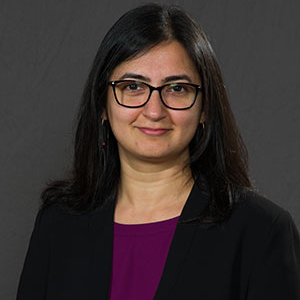Context
A group presentation can promote effective collaboration and team building, while honing the necessary skills of oral communication. Reading and comprehending research articles from recent primary literature can help students enhance their critical thinking and analysis while addressing several competencies, such as application of the scientific process and understanding the relationship between science and society. Together the two activities can help develop scientific literacy, problem solving and the ability to communicate scientific content to an audience. Undergraduate students are often overwhelmed with scientific literature, and working in teams can help alleviate the pressure, while motivating each other to learn. This activity can be done in a face-to-face setting or in an online environment and is transferrable to other subjects.
Step-by-Step Implementation
- Students chose their partners or are allotted partners by the instructor.
- The teams search for two recent research articles from scientific journals or pick two articles from a provided list. The instructor provides several choices of articles related to the topic being covered in class. They are asked to pick two in case more than one group has selected the same article. Instructor approves the article choice.
- Each team works together to read, interpret and comprehend the article. They create a concept map to show their work, and submit it on paper, or take a picture and submit it online.
- Each team works together to prepare a PowerPoint presentation, which includes the following:
- Title and reference of the article
- Introduction/background
- Results with key experiments, methods and data
- Summary/conclusions
- Future work
- Critique
- Any additional references
- The team divides the presentation amongst group members. They decide who presents which slides as long as each student covers some part of the introduction, discussion, or conclusion, and at least a few results with figures. Students give presentations on the assigned day in class, or they record their presentations together, and submit it in an assignment on Canvas.
- Assign additional assignments. Depending on the needs of the course or the subject, students can be given additional assignments, like writing a critical evaluation of the article, or coming up with ideas for future experiments.
Notes
- Before starting this activity, I work with the class to read a common article. We use the CREATE (Consider, Read, Elucidate the hypotheses, Analyze and Interpret the data, Think of the next Experiment; Hoskins et al., 2007) method to study the background and results.
- I tend to choose articles about topics that have been or are being covered in class.
- I give them at least a month to prepare their presentations, so they have enough time to collaborate and ask questions about the content.
- I provide resources that provide information about reading and understanding literature.
- Also, I present an article in class, as an example for covering content, annotating figures, explaining results etc.
- A rubric is used to assess the students. This includes categories like content comprehension, critical evaluation, accuracy and understanding of the concepts, overall organization, and delivery of the presentation.
Effectiveness
Initially students are worried about their ability to understand a scientific article. To alleviate their concern, I tend to choose topics that are already covered in class, and the autonomy to choose articles helps as well. Students are usually able to pick articles that are related to a topic of their interest, or something that they want to pursue their studies in. Although they are apprehensive and anxious in the beginning, following the presentations they express increased confidence in their ability to comprehend and present primary literature. In fact, if they come to another class that uses primary literature, they are less worried. Also, they gain confidence presenting in front of an audience. Some students have expressed that they feel less nervous presenting at other venues, since they have managed to present scientific content before. In terms of collaborations, the students enjoy working with partners that they have chosen, and if they have issues, they usually do not complain. They always state that working with someone helps them study and deal with the stress.
Keywords
Associated tools or materials
- Research articles or other material to be presented.
- Software to create presentations, such as Microsoft PowerPoint or Google Slides.
- Projector and screen for face-to-face setting, or video platform (such as Zoom or Teams Meetings) to have meetings and record presentations in an online environment.
About this course
-
Teaching mode:
online, hybrid, face-to-face
-
Students:
graduate students, first-year students, undergraduate students, majors, non-majors
References
Hoskins SG, Stevens LM, Nehm RH (2007). Selective use of the primary literature transforms the classroom into a virtual laboratory. Genetics 176, 1381–1389.


